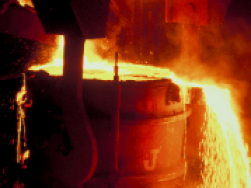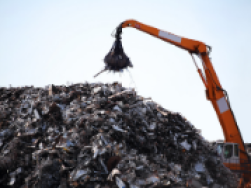State of Steel - March 2022
Pricing - Steel pricing and availability beginning to meet uncertainty!
Steel price increases have peaked in November, flattened in December, and decreased in January and February. We have now seen the steel price index called CRU, decrease 5 weeks in a row. Even though we have seen a recent decline in the last few months, the CRU index is still roughly 10% higher than a year ago. While flat steel has seen several price decreases of late, steel futures increased more than 40% week over week. The 3-month hot-rolled coil futures increased from $1,025 to a whopping $1,450.
Structural tubing had slowly decreased between November of 2021 and February of 2022. However, we are beginning to see a couple of major increases of late due to raw material and capacity issues. Moving forward there appears to be upward momentum for structural steel to continue increasing in price swiftly. With regards to DOM tubing, we still have not seen an increase or decrease since August 20th except for a new surcharge just announced this month. Mechanical tubing prices continue to remain high due to lead times and demand. Most DOM mill pricing has increased 13 times for a total of 89-92% overall since the beginning of November 2020. Lead times are still very long for mechanical tubing thus less urgency to reduce pricing. Cold drawn and hot rolled seamless tubing has recently seen a $100 per ton increase for all new orders. The below charts reflect the CRU index and a current listing of all price increases/decreases on tubing that we have seen since late August of 2020.
SBQ Bar is increasing base prices by roughly $70.00 per ton. Nucor followed Cleveland-Cliffs’ lead and announced an attempted base price increase on new sheet orders by $50/ton effective immediately. Several sources have indicated that some domestic mills are quoting hot band at $1,200/ton or higher due to rapidly increasing raw materials and sourcing challenges for semi-finished products. (Source: Platts) Commercial Metals and Steel Dynamics each announced a $100/ton rebar price increase effective immediately. (Source: AMM)



Base pricing on Dura-Bar continuous cast iron bar remains flat this year. That is a welcome sign considering we saw 4 base price increases in 2021. Surcharges however have continued to rise, and ductile iron is at a new high. Future surcharges look to remain elevated and even grow more given the situation with pig iron which is a critical ingredient of cast iron. The below chart details the Dura-Bar surcharges over the last year or so.

Lead Times
Understanding lead times for steel products are important to every participant in the supply chain. Lead times for steel products are as follows (as of 03/11/22):
Average HRC lead times were flat last week at 4.4 weeks, which is below the average of 5.6 weeks since 2016. Other product lead times were flat to higher last week with CRC lead times at 6.4 weeks, HDG lead times at 6.8 weeks, and plate lead times at 4.6 weeks. (Source: Platts)
DOM Tubing lead times continue to be long and are anywhere from 25 to 32 weeks primarily now due to backlog. We continue to see lead times grow and are now seeing availability not free up until November of 2022.
Structural Tubing mill lead times have improved and are running approximately 4-6 weeks upon receipt of order. Common sizes we can get sooner.
Dura-Bar Continuous Cast Iron mill lead times are approximately 8-14 weeks depending on size, grade, and finish. If it’s a large bar, special grade, size, or shape then the lead time could be considerably longer.
Metal Production
In the week ended March 5, US raw steel production increased 0.4% week-over-week to 1,762,000 tons (+0.1% YoY). US capacity utilization was 80.0% vs 77.7% last year. Year-to-date production is 16,324,000 tons up 2.6% year-over-year from 15,913,000 tons last year. (Source: AISI) Mills continue to be disciplined in the marketplace and refuse to saturate the market with unneeded steel. There is growing concern about supply over the next few months, as the US market faces mill outages, the Ukraine crisis, and weak imports.
Scrap & Steel Inputs
The March scrap trade kicked off this week with several mills entering the market and offering to buy shredded scrap and obsolete grades at up $125/ton month-over-month. However, uncertainty remained around prices for prime grades with initial mill bids in the range of up $175-$200/ton month-over-month. These increases are due to the potential impacts from the Russian invasion of Ukraine, which is disrupting trade flows and squeezing the available supply of pig iron. US imported pig iron prices increased 11.0% week-over-week to $625/ton. (Source: Platts) Nucor executives stated that pig iron represents approximately 10% of metallics, with the majority from Russia and Ukraine. The company said that it has been exploring pig iron alternatives, and currently has enough pig iron volume to get through June. Iron ore prices hit a 7-month high this week, driven by expectations that China will take measures to stimulate its economy, loosening controls on the housing market and increasing infrastructure investment. However, China did say it plans to keep debt levels stable this year. (Source: Bloomberg) The London Metal Exchange took the unusual step of suspending nickel trading on Tuesday morning after three-month contract prices more than doubled to over $100,000 per ton. Prices have since fallen, but remain extremely high. (Source: CNBC)
Oil & Gas Industry
The US rig count was flat week-over-week at 650 rigs as of 3/4. The rig count is up 61.3% year-over-year. (Source: Baker Hughes) West Texas Intermediate (WTI) crude futures, the U.S. oil benchmark, at one point spiked to $130.50, its highest since July 2008, before settling up 3.2% at $119.40, the highest settle since September 2008. The US has banned all imports of Russian oil and gas and energy. No new contracts will be allowed, and existing contracts for Russian oil must be phased out within 45 days according to senior officials. The US imported about 672,000 barrels a day from Russia in 2021, according to figures from the EIA. That amount makes up roughly 8% of the total US imports of oil and refined products. (Source: CNBC)
Steel Capacity
Nucor Decatur will take a 10-day maintenance outage at its steel mill in Alabama from March 7-16. (Source: AMM) US Steel is investing about $60 million in its Gary Work steel mill to insource pig iron production capabilities at the mill. The investment will help produce up to 500 thousand tons of pig iron per year. Once the investment is completed, pig iron production at Gary Works is expected to provide nearly 50% of its ore-based metallics needs at the US Steel subsidiary Big River Steel. The permitting process is underway, and construction is expected to start in 1H2022. Pig iron production at Gary Works is expected to begin in 1H2023. (Source: Bloomberg) Russian steelmaker Severstal suspended sales to Europe, its biggest export market after billionaire owner Alexei Mordashov was sanctioned. The company, which sells about 3 million tons of steel per year to Europe, is looking at new avenues for sales after being forced to suspend deliveries. (Source: Bloomberg)






